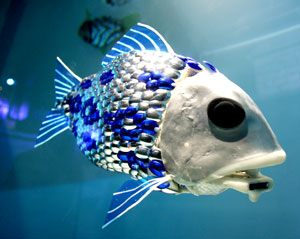Big
River Magazine |
|
 |
|
|
River News Golden Opportunity Golden eagles are a much less familiar sight than bald eagles. People often mistake them for big hawks. They arrive in the river valley in early winter and depart in early spring, heading back to their nesting grounds in Canada. Researchers hope to learn more about the birds’ summer breeding area and how they use the Mississippi River Valley during the winter, by tracking two golden eagles that were fitted with radio transmitters and released this spring. The project is a partnership of the U.S. Fish and Wildlife Service, the National Eagle Center, Wisconsin and Minnesota departments of natural resources and Audubon of Minnesota. You can follow the goldens on the Minnesota Audubon website. Ashes to Ashes Victory, Wis. — Vernon and Crawford counties in Wisconsin are under quarantine to prevent the spread of the emerald ash borer, an invasive insect that destroys ash trees. A sharp-eyed property owner found the insect on his trees in Victory, and reported it to the state. When the bug’s identity was confirmed, officials sprang into action, getting permission to quarantine the area within just a few days of the sighting. Quarantine guidelines include stipulations to: move no firewood out of the area; burn all ash firewood before mid-May; leave cut wood where it is for at least two years; follow the guidelines for using infested wood, if using ash wood to make products. The Wisconsin website offers more information. Emerald ash borers are metallic green beetles about a half-inch long. Several websites offer identification information. If you think you’ve spotted one, call the EAB program toll-free hotline at 800-462-2803. Fishy Business
What looks like a carp (well, sort of), moves like a carp (sort of) and costs $29,000? It’s robot fish, a product to detect pollution, developed by researchers at Essex University, U.K., and the BMT Group. The five-foot-long mechanical fish will carry chemical sensors and transmit information to shore using Wi-Fi technology. Earlier robofish were remote controlled, but these can swim independently and return to their recharge hub when their batteries run low, after about eight hours. They will be able to swim about a yard per second. (Photo courtesy of UPPA) Watch video
|

